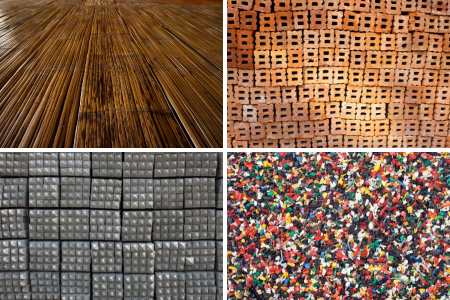Written by: Edrian Blasquino
The real estate market grows more complicated as realtors and buyers learn more about housing costs. While there are obvious costs associated with buying a house, such as mortgages, renovations, and other costly paperwork, there is another aspect of home ownership slowly gaining ground in the real estate market. Sustainable housing has become a hot topic in industry- and with good reason.
Surveys have shown more homeowners have become more wary of their home’s emissions. Some may think it is just an eco-friendly responsibility, and while that’s important, homeowners can reap more immediate benefits from eco-friendly housing. Sustainable materials have grown in usage these past few years, and the benefits highlight why that is happening.
Sustainable Materials in Housing
Sustainability is a must-have feature in your dream home. While lifestyle changes will always be welcome, homeowners can weave sustainability into the very bones of the house itself. Research and innovation have discovered many sustainable materials, and the ones listed below are some of the most promising and practical.
Ashcrete
Ashcrete is a concrete alternative made using fly ash, a byproduct of coal combustion. This material reduces waste and decreases reliance on traditional cement, a significant source of greenhouse gas emissions. Ashcrete arguably looks better than concrete, with a smoother and suppler finish that rough concrete lacks.
Bamboo
Bamboo radiates sustainability, from its appearance to its qualities. Strong, light, and renewable, bamboo offers high-quality material with minimal environmental impact. Bamboo is a fantastic yet sustainable material with a strong aesthetic appeal.
Clay
The best builders have used clay in construction for centuries. It is often formed into bricks or tiles and provides excellent thermal insulation. Additionally, clay is abundant and requires less energy to process, especially compared to other materials.
Cob
Cob is a resilient yet organic building material. Cob is highly sustainable due to its natural components (clay, sand, straw, and water) and the low energy required for production. Cob buildings are tough, fireproof, and provide excellent thermal mass, particularly suitable for dynamic environments.
Enviroboard
Instead of waste, clever manufacturers created Enviroboard from recycled agricultural refuse, such as wheat or rice straw. This versatile material can be used for walls, ceilings, and floors, offering a sustainable alternative to traditional wood-based panels.
Ferrock
Ferrock, forged from recycled steel dust and other industrial waste, is even tougher than traditional concrete. Despite that resilience, ferrock is also more flexible, giving it greater resistance to cracking. As a bonus, it absorbs carbon dioxide during its hardening process, ensuring construction complies with stringent standards, including mandatory embodied carbon assessments.
Hempcrete
As the name implies, hempcrete is a unique bio composite material made from the inner fibers of hemp with a dash of lime. While that sounds more botany than construction, do not let it fool you. Hempcrete is lightweight, provides excellent insulation, and is resistant to mold, pests, and fire. Hempcrete also absorbs carbon dioxide as it hardens, contributing to a lower carbon footprint.
Mycelium
One of the most unorthodox building materials on this list, mycelium is a form of fungus that can be grown into molds to create strong, lightweight, and biodegradable building materials. It is particularly useful for insulation and grows quickly with minimal resources.
Plant Foam
Plant foam is made from plant-based materials and can be used as an eco-friendly alternative to traditional petroleum-based foam insulation. It provides good thermal insulation and is biodegradable, reducing the environmental impact.
Precast Concrete
Precast concrete involves casting concrete elements in a controlled factory environment before transporting them to the construction site. This method reduces waste, improves quality control, and allows for the incorporation of recycled materials.
Recycled Plastic
Recycled plastic can be repurposed into various building materials, including bricks, lumber, and insulation. Using recycled plastic helps reduce waste and decreases the demand for new plastic production, which is energy-intensive and environmentally damaging.
Recycled Steel
Recycled steel is a popular choice in construction due to its strength, durability, and cost-efficiency. Unlike other recyclable materials, steel, especially when cleaned and treated, will prove just as durable as its newly forged counterpart. Steel can be recycled multiple times without losing its properties, making it an ideal sustainable material for structural elements in buildings.
Recycled Wood
Recycled wood from old buildings and shipping crates are useful for new construction projects. These materials reduce the need for new timber, conserve forests, and minimize waste. However, take care of where you source these wooden materials. Make sure it is dry, durable, and does not secretly house a family of termites.
Stone
Stone is a natural, durable building material that requires little processing. While it is certainly intimidating, stone has excellent thermal mass properties, helping to regulate indoor temperatures. Using locally sourced stone can further reduce the environmental impact of transportation. For those in particularly stony areas, they may even consider building into the walls of the earth itself, like a cozy hobbit hole.
Terrazzo
Terrazzo is a creative mixture of granite, glass, marble, and quartz, then set with a cement or resin binder. It is durable, low-maintenance, and made using recycled materials, making it a sustainable option for flooring and countertops. Plus, it has a gorgeous and glossy finish, providing a chic appearance without the cons of non-sustainable materials.
Final Thoughts
These are only some of the dozens of sustainable materials researched and used globally. As the world grows warmer, sustainability has become an appealing quality for houses. Realtors should always consider these materials as a benefit when speaking with eco-minded clients.

